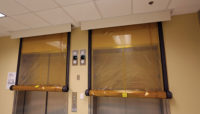 ASHRAE has published a new handbook on smoke control engineering.
ASHRAE has published a new handbook on smoke control engineering.
The Handbook of Smoke Control Engineering extends the tradition of the comprehensive treatment of smoke control technology, including fundamental concepts, smoke control systems, and methods of analysis. The handbook provides information needed for the analysis of design fires, including considerations of sprinklers, shielded fires, and transient fuels. It is also extremely useful for practicing engineers, architects, code officials, researchers, and students.
Following the success of Principles of Smoke Management in 2002, this new book incorporates the latest research and advances in smoke control practice. New topics in the handbook are: controls, fire and smoke control in transport tunnels, and full-scale fire testing. For those getting started with the computer models CONTAM and CFAST, there are simplified instructions with examples. This is the first smoke control book with climatic data so that users will have easy-to-use weather data specifically for smoke control design for locations in the U.S., Canada, and throughout the world.
Systems discussed in the handbook include those for stairwell pressurization, elevator pressurization, zoned smoke control, and atrium smoke control. The latest smoke control research and most current engineering approaches are also included. Unique to previous smoke control literature, this handbook provides many example calculations to help designers prevent smoke damage.




